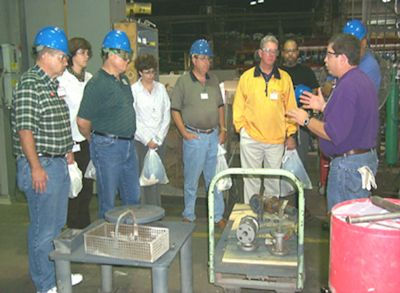Employers Must Provide Training
We already discussed your right to receive training from your employer on a variety of health and safety hazards and standards, such as chemical right to know, fall protection, confined spaces and personal protective equipment.

Many OSHA standards specifically require the employer to train workers in the safety and health aspects of their jobs. Other OSHA standards make it the employer's responsibility to limit certain job assignments to those who are authorized, certified, competent, or qualified - meaning that they have had special previous training, in or out of the workplace as follows:
- Authorized person - means a person approved or assigned by the employer to perform a specific type of duty or duties or to be at a specific location or locations at the jobsite.
- Certified Person - is one who has passed stringent written and practical exams related to the work that he will perform. OSHA requires the organization providing the examinations be accredited.
- Competent person - means one who is capable of identifying existing and predictable hazards in the surroundings or working conditions which are unsanitary, hazardous, or dangerous to employees, and who has authorization to take prompt corrective measures to eliminate them.
- Qualified person - means one who, by possession of a recognized degree, certificate, or professional standing, or who by extensive knowledge, training, and experience, has successfully demonstrated his ability to solve or resolve problems relating to the subject matter, the work, or the project.
OSHA construction standards include a general training requirement, which states: "The employer shall instruct each employee in the recognition and avoidance of unsafe conditions and the regulations applicable to his work environment to control or eliminate any hazards or other exposure to illness or injury." Additional general training requirements for construction include training for workers:
- required to handle or use poisons, caustics, and other harmful substances;
- who may be exposed to job sites where harmful plants or animals are present;
- required to handle or use flammable liquids, gases, or toxic materials; or
- required to enter into confined or enclosed spaces.
Knowledge Check Choose the best answer for the question.
3-3. Which of the following is defined as being capable of identifying existing and predictable hazards in the surroundings or working conditions?
You forgot to answer the question!
